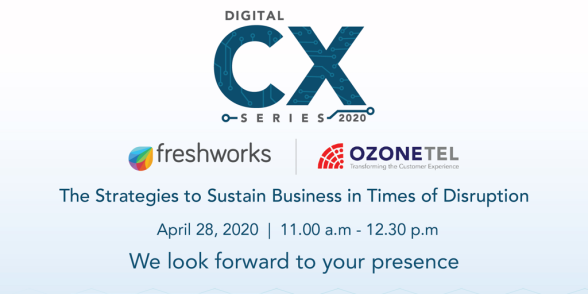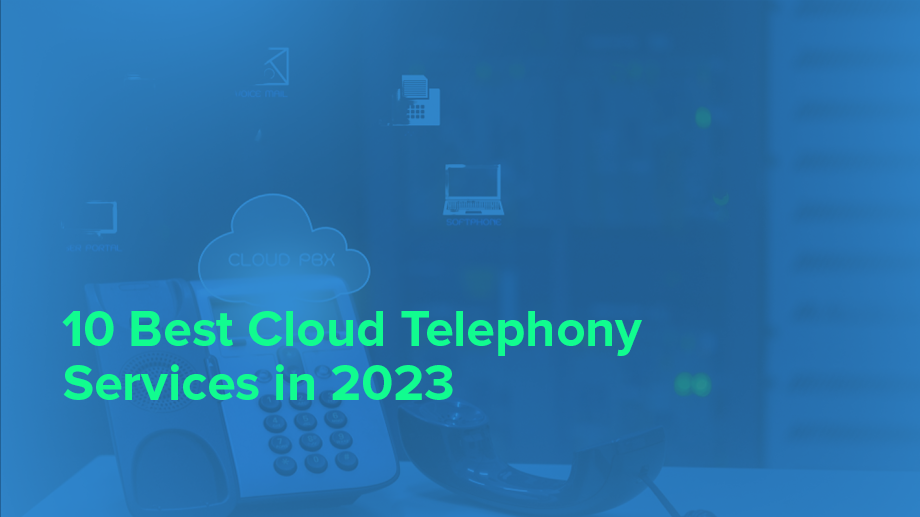- Resources
- Strategies to Sustain Business in Times of Disruption
Strategies to Sustain Business in Times of Disruption

Unusual times call for unusual measures. It makes sense then that Dun & Bradstreet India’s Digital CX Series was held on an unusual medium— a Whatsapp Chat. We were happy to co-host the session on Strategies to Sustain Business in Times of Disruption along with Freshworks, India. Here are excerpts from the session.
In this article, we will explore:
- 1. Companies need to rethink their Business Models. Cloud computing will play a critical role in business strategies post-COVID era.
- 2. WFH might emerge as a sustainable solution post COVID-19
- 3. The customer is your salesperson. Develop strategies to keep them engaged.
- 4. A robust BCP ensures customer retention and creates value for customers during challenging times.
- 5. Tailor your CX strategies to your customer needs. Agility is the key.
- 6. Working from home is not always easy. Help employees create a stellar customer experience
- 7. AI can help build effective Customer Service Experiences.
- 8. Automation can create cost optimization.
- 9. Conclusion
Companies need to rethink their Business Models. Cloud computing will play a critical role in business strategies post-COVID era.
Within the past few weeks and months, we’ve seen whole businesses move online. Even complex businesses such as healthcare have moved to a fully remote model. Plus, the customers’ buying journey and interaction channels have also changed. Naturally, we can expect businesses to revisit all existing investments in office spaces, networks, and security.
Clearly, the “asset-light” cloud model is here to stay. During the COVID era, we’ve how fast people and businesses were able to pivot to remote working processes. Its because cloud applications undeniably provided the flexibility, security, and agility businesses need.
“Cloud investments, collaborative tools, software for customer engagement, employee engagement, modern ERP, partner management etc. have become crucial.” Mr Rajiv Ramanan, Director, Startup Program & Technology Alliances, Freshworks
WFH might emerge as a sustainable solution post COVID-19
The current crisis has made it clear that technologies are available to allow employees to successfully work from home. People need not be in the office 100% of the time. And offering WFH opens your business up to a whole new talent pool. Harishankar Mishra shares how Future Generali Helplines and service channels remained operational through without a day’s interruption. Sagar mentioned how Ozonetel was able to enable thousands of call centers to work from home with their cloud call centers and mobile applications.
The customer is your salesperson. Develop strategies to keep them engaged.
“In all cases, there is no B2B or B2C sales.. it is always P2P, person to person. And it applies to all purchases and sales, due to the very reason that we are human. And for us, it is never just a trading transaction but a very human interaction as well.” Mr Rituparn Bakshi, Head Quality-Enterprise, Tech Mahindra Pvt. Ltd.
All transactions are human interactions. After the sale is complete, the relationship is not. You need to continue supporting the customers on a continuous basis. Post Transaction customer engagement ensures steady & repeat business and word of mouth marketing. It drives loyalty and lets brands understand their customers better, which in turn will help tailor-make products to suit them.
Therefore, business plan need to have a mechanism to engage proactively to get customer feedback.
Communication is the key. Be there for the customers whenever they need you, and at other times surprise them with unexpected positive gestures.
A robust BCP ensures customer retention and creates value for customers during challenging times.
“What was considered BCP has become BAU (business as usual) over the past one month. Your multi-channel support needs to continue, business as usual whether you are in the office space or not! In fact, customers expect greater availability and responsiveness..if one can maintain a Human & Caring Experience, that is what differentiates the organisation.” Mr Harishankar Mishra, VP Customer Experience, Future Generali India Insurance Company Ltd.
An adverse event is the best test of how capable your organization is. For instance, how soon were your sales, support, and HR functions able to get up and running? Were you able to retain customers and even increase your customer base?
Customers may forgive lapses during an emergency, but what they appreciate is if you continue to be responsive, and are available to quell their anxiety, and build a human connection. Most businesses used cloud solutions such as conferencing tools, Cloud call centers, and Cloud CRM to stay up and running. What this meant is that even if most or all business functions stalled, customer communications could not only continue but even increase.
Technology-enabled services such as remote working call centers, CRM integrated dialers, automated callbacks, automated feedback calls, bots, self-service IVRs can all help businesses create a robust, customer-centric BCP.
Tailor your CX strategies to your customer needs. Agility is the key.
“CX strategies have to modeled around what the customer really wants, not what you think or believe customers want.” Mr Kashish Ahuja, Chief Customer Experience Officer, Excitel Broadband Ltd.
Each customer is different. Use market research to understand your target audience better: what affects them, what will make them like your product, or what influences their decisions around your product.
Solicit feedback to arrive at pain areas in your processes and go about solving these.
And stay engaged with the customer to understand trends and changing needs. Use your customer engagement to sharpen your product. The agility of the organization to come up with real-time solutions to the changing environment is the key to winning customer trust and loyalty.
Working from home is not always easy. Help employees create a stellar customer experience
“As long as employees are motivated, customer UX would be very engaging. Keep employees/team engaged through regular team meetings, out of box thinking and keep innovating new ways and means of doing things differently..” Mr Puneet Khanna, COO, Edenred India
Employees are businesses’ most important assets. In today’s world, the physical spaces we operated in have disappeared, and our processes are continuously evolving. This means that the knowledge worker is more important than ever before. Harishankar Mishra reminds us that we should treat them with gratitude and empathy while they work from home because it’s not always easy. “Once the employee is engaged and motivated enough the battle is won. They will go out of the way to serve the customers. ” And that’s the key to stellar experiences.”
Puneet talks about experimenting with employee incentives, reducing threshold gates for performance measurement, and preserving a portfolio of customers in tough times. Rajiv adds that providing your agents with as much context as possible, providing them adequate training, and appreciating them for performance makes it far easier for your agents to provide great customer support.
AI can help build effective Customer Service Experiences.
One of the most important aspects of CX is how quickly you can resolve a customer’s query either via connecting to the right customer service representative or resolving digitally. AI is helping customer service teams scale up in seconds, resolving tickets across channels without human intervention. With virtual agents, you can offer a full resolution within the interaction rather than simply linking out to help articles.
When creating an AI strategy, you need to understand what your customers most require. You should prioritize user experience over delegating more use cases to AI. You should carefully delegate work between humans and machines: AI should augment work and automate specific tasks, not replace humans agents.
It’s about the quality of the C/X, over the quantity of use cases an AI is tasked to manage. There are many things that will never – and should never – be automated: such as showing empathy, creativity, and complex problem-solving. Rajiv Ramanan, Director, Startup Program & Technology Alliances, Freshworks
Automation can create cost optimization.
The great thing is that in most cases you’re making things faster for the customer, so it isn’t reducing the customer experience but improving it.” Sagar Rane, Business Lead, Middle East & West Asia, Ozonetel Communications.
A business can automate any mundane, repetitive work. Many businesses are working towards automating communications. Bots can handle renewal calls, collection calls. Both bots and IVR can handle L1 queries. In fact, Rajiv mentions that they have seen about 65% deflection rates by applying AI contextually in the right way.
Kashish adds, “today the customer base is happy to be served digitally and we should look at it in 2 ways – easy query (like balance, payments, limit these are simpler emotionless asks) and complex issues (this is where human servicing is essential as it may touch emotional aspects).”
Conclusion
We are passing through one of the most challenging times. Businesses are facing disruption of an unprecedented nature. But companies can develop strategies to sustain their businesses during current challenging times by enabling customer communications, ensuring undisrupted customer service, and empowering their employees with the right tools and attitudes. These strategies are likely to help them continue to retain customers, improve workflows, and optimize costs well past the current crisis.
“Strategies to Sustain Business in Times of Disruption” was part of Dun & Bradstreet’s Digital CX Series, an invite-only WhatsApp event. It was co-hosted by Ozonetel and Freshworks.
View Ozonetel’s Work From Home Solution here.
And about their Freshworks Integration here.
Ready to take control of your call transfer
experience for better CX outcomes?
Related resources
Lorem ipsum dolor sit amet, consectetur adipiscing elit. Ut elit tellus, luctus nec ullamcorper mattis, pulvinar dapibus leo.







